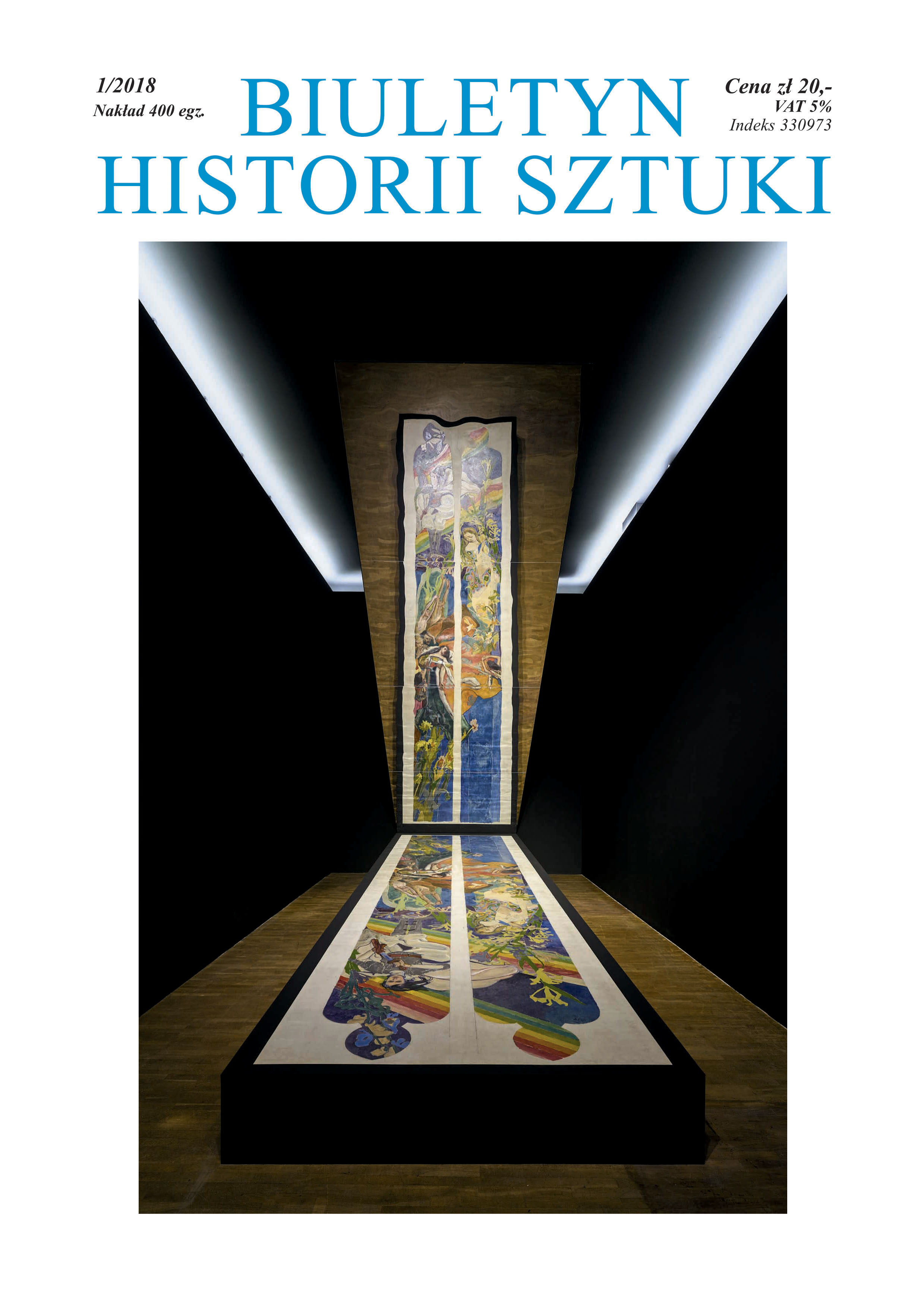Domniemane modello Augustyna Mirysa do obrazu Podniesienie krzyża w kościele w Bielsku Podlaskim
Supposed Modello for Augustyn Mirys’s Painting 'Elevation of the Cross' at a Catholic Church in Bielsk Podlaski
Author(s): Zbigniew MichalczykSubject(s): Fine Arts / Performing Arts, Visual Arts, History of Art
Published by: Instytut Sztuki Polskiej Akademii Nauk
Keywords: Augustyn Mirys (painter); Ignacy Stelmaski (painter); Bielsk Podlaski - Catholic Church; Bielsk Podlaski - Orthodox Church; model painting; Benoît Audran the Elder; Charles Le Brun;
Summary/Abstract: Supposed Modello for Augustyn Mirys’s Painting Elevation of the Cross at a Catholic Church in Bielsk Podlaski In ca 1784, on the commission of Izabela Branicka née Poniatowski, Augustyn Mirys executed at least three retables for the Church of the Nativity of Our Lady and of St Nicholas in Bielsko Podlaskie: The Visitation after Federico Barocci; St Anthony with the Child after Carlo Maratta; and the Elevation of the Cross after Charles Le Brun. In the course of the in-field stock-taking for the Catalogue of Art Monuments in Poland, Bielsko County, in the Orthodox Church of the Nativity of Our Lady in Bielsko Podlaskie, a small sketch-like oil painting (62 x 50 cm) featuring almost the same composition as the Elevation of the Cross in the afore-mentioned Catholic Church of the Nativity of Our Lady and St Nicholas in the same town was found. Unfortunately, the Orthodox Church painting underwent a very unfortunate conservation in 2005 which blurred its original painterly manner, yet a photograph prior to those works, the fact that the discovered work was painted with the pigments applied in the 18th century on hand-woven canvas from the 18th century, allows to consider it to be contemporary with the retable paintings in the Bielsko Parish Church. What matters, however, is the juxtaposition of the model for the composition (by Benoît Audran the Elder, after Charles Le Brun), the painting from the Orthodox Church, and the canvas from the retable in the Catholic Church. The painting found in the Orthodox Church features the figure that can be found in the model painting, yet was not placed in the large painting in the Catholic Church, this clearly testifying to the fact that the Orthodox Church painting must have constituted an intermediary stage in the works on the adaptation of Le Brun’s composition for the decoration of the Parish Catholic Church. This may thus be most likely a work by Mirys – a very rare example of a modello in Polish art, namely of a painting presented to the customer by the painter prior to the start on the commissioned work. There have been very few pieces of the kind preserved in Poland: merely several modellos by Szymon Czechowicz, Marcello Bacciarello, Franciszek Smuglewicz, Jan Bogumił Plersch, and possibly one by Bernardo Bellotto. All these artists catering to the tastes of the elites of the Polish-Lithuanian Commonwealth, boasted an academic background, and were capable of independently creating compositions. An assumption can be made that these kinds of works were rarely executed, since the most frequent basis for a contract between the client and the painter-craftsman was a print meant to serve as the model for the composition. However, in this case the print model was substantially transformed: the number of figures was reduced, their positions swapped, while the originally horizontal composition was inscribed into a vertical rectangle. It may thus be assumed that Izabela Branicka née Potocki wanted to see the model of the painting she commissioned beforehand, while the modello testifies to the creative process. The circumstances as well as the time of transferring it into the Orthodox Church remain unknown, yet interestingly, the church had been a Uniate one until 1839, and the contacts of its vicars and the Catholic clergy were very likely. To conclude, also the painting titled Our Lady of the Rosary dated 1898 and bearing the signature of Ignacy Stelmaski should be discussed. The painting manner as well as the facial features of the figures are typical of mediocre sacral painting of the late 19th century. The only thing that strikes is the composition, constituting a reduction and a minor alteration of the well-known solution of Carlo Maratta, popularized in the early 18th century with the print by Robert van Audenaerde. This is such an extremely untypical model for the production from the turn of the 19th century, with the transformation consisting mainly in limiting the number of figures and adjusting the composition to the format of a more elongated rectangle so typical of Mirys that one can hardly help thinking that Stelmaski’s work is but a copy or a pastiche of an unpreserved painting by the first artist.
Journal: Biuletyn Historii Sztuki
- Issue Year: 80/2018
- Issue No: 1
- Page Range: 5-22
- Page Count: 18
- Language: Polish
- Content File-PDF

